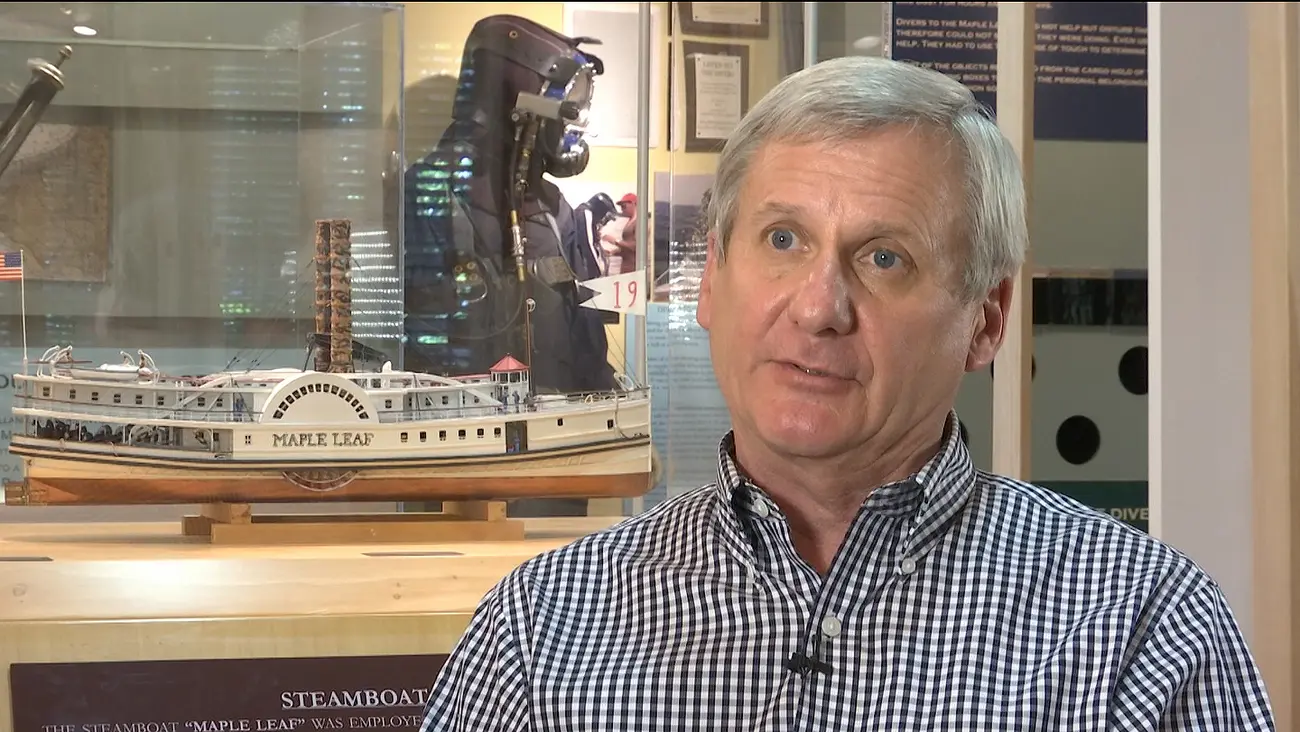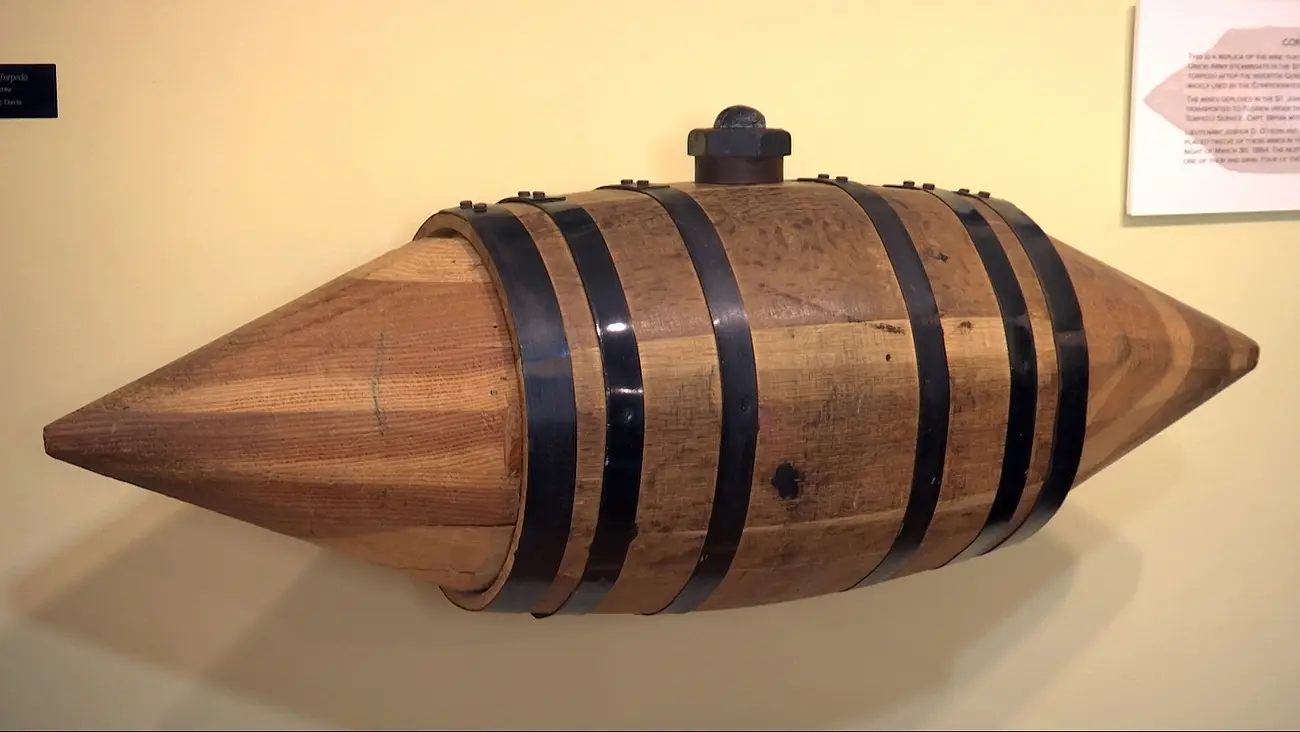At 4:00 a.m. on April 1, 1864, an explosion disrupted the still waters of the St. Johns River as a Confederate mine ripped through the hull of the steamship Maple Leaf. The ship was transporting Union supplies during the Civil War.
“It was participating in the Southeast Atlantic Blockade as a troop transport,” says Keith Holland, founder of St. Johns Archaeological Expeditions, Inc.
“After the Battle of Olustee, which was a major Union defeat, all troops were called from surrounding areas, especially Charleston, to come to Jacksonville immediately. They had camped on Folly Island, an entire brigade, for about 20 months. It took the Quartermasters approximately a month to break down the entire camp, and load up all of the thousands of soldiers personal effects into boxes. They were all placed into the Maple Leaf.”
Before the Union supplies could be unloaded from the Maple Leaf, the ship was ordered to go to Palatka and deposit some provisions there, including a group of horses. The ship went to Palatka, but never made it back to Jacksonville.
“They were ordered to travel at night with no lights, only the binnacle light was allowed in the pilot’s house,” says Holland.
“It was a full moon, no wind, the river was as clear as the surface of a mirror. Romeo Murray, the pilot, was heading north. He saw nothing on the water, but there was a contact explosive mine submerged under the water. He struck that directly under the hull, approximately at the foremast, and it imploded a huge hole into the bow of the boat.”
The front deck of the Maple Leaf caved in and the pilot house fell forward. The ship’s whistle started to blow as its wire was stretched. The pilot turned the boat in an attempt to get to the east bank of the river, but it was too late.
After five or six revolutions of the paddle wheel, the Maple Leaf sank to the bottom of the St. Johns River.
The Confederate mine that sunk the Maple Leaf was about a yard wide. The center looked like a small barrel, but tapered wooden points on both sides made it resemble a torpedo.
The mine blast killed four people, but the rest of the crew was able to escape in life boats.
“The officer in charge said that he thought it would be ‘the better part of valor’ to get out of there before the Confederates approached,” says Holland. “They spent the rest of the night, from four o’clock in the morning, rowing to Jacksonville, and arrived there about 8:30 in the morning.”
Today we view the materials left aboard the ship as having great cultural significance, but the artifacts remained undisturbed and forgotten for more than 125 years.
In 1984, Jacksonville dentist and diving enthusiast Keith Holland became aware of the Maple Leaf story and formed St. Johns Archaeological Expeditions, Inc. to research, locate, and excavate the ship.
Years of research led Holland to the conclusion that 800,000 pounds of personal items belonging to Union soldiers would still be aboard the Maple Leaf, preserved in an anaerobic environment.
Holland and his team of divers dragged a metal detector across the bottom of the river, looking for the exact location of the ship. It snagged on a shrimp net, which in turn had been caught on the paddle wheel axel of the Maple Leaf. It was the only part of the ship sticking up from the river floor.
“The main deck was buried under seven feet of St. Johns River mud,” says Holland. “This was going to take a very big deal to get to.”
Holland’s team was able to clear away enough mud to gain access to the ship and begin recovering artifacts from the Maple Leaf. Much of that material is on display for the first time at the Mandarin Museum and Historical Society in Jacksonville along with a detailed model of the ship, a replica of the mine that sank it, and a diving suit worn by one of the excavators.
Only a very small portion of the Maple Leaf cargo has been recovered. Most of the ship’s contents remains buried in the St. Johns River.
Dr. Ben Brotemarkle is executive director of the Florida Historical Society and host of the radio program “Florida Frontiers,” broadcast locally on 90.7 WMFE Thursday evenings at 6:30 and Sunday afternoons at 4:00, and on 89.5 WFIT Sunday mornings at 7:00. The show can be heard online at myfloridahistory.org.


